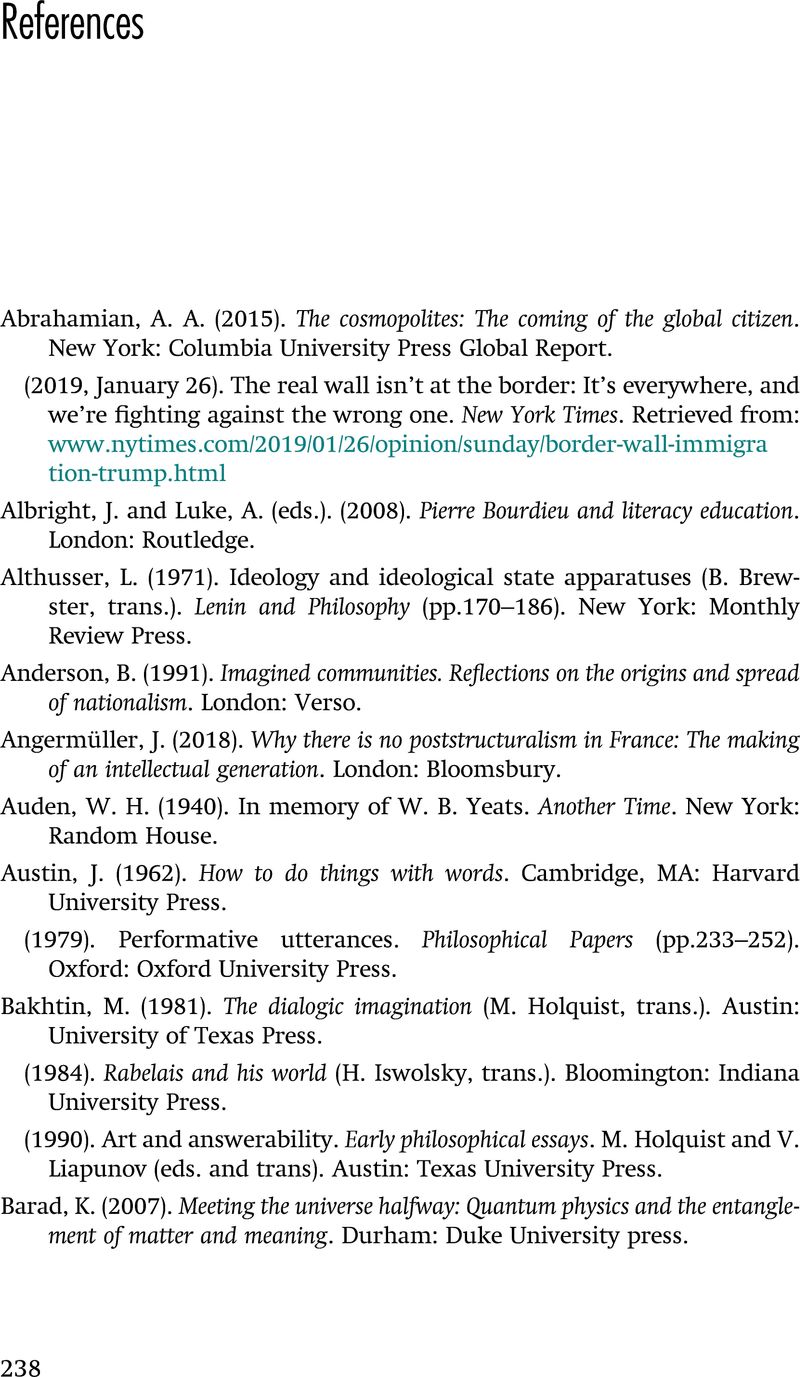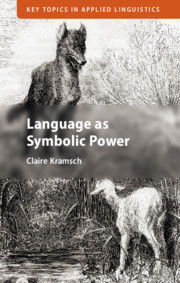Book contents
- Language as Symbolic Power
- Key Topics in Applied Linguistics
- Language as Symbolic Power
- Copyright page
- Contents
- Figures
- Acknowledgments
- Introduction
- Part I The Power of Symbolic Representation
- Part II The Power of Symbolic Action
- Part III The Power to Create Symbolic Reality
- Conclusion
- Glossary
- Endnotes
- References
- Index
- References
References
Published online by Cambridge University Press: 15 October 2020
- Language as Symbolic Power
- Key Topics in Applied Linguistics
- Language as Symbolic Power
- Copyright page
- Contents
- Figures
- Acknowledgments
- Introduction
- Part I The Power of Symbolic Representation
- Part II The Power of Symbolic Action
- Part III The Power to Create Symbolic Reality
- Conclusion
- Glossary
- Endnotes
- References
- Index
- References
Summary

Information
- Type
- Chapter
- Information
- Language as Symbolic Power , pp. 238 - 258Publisher: Cambridge University PressPrint publication year: 2020
